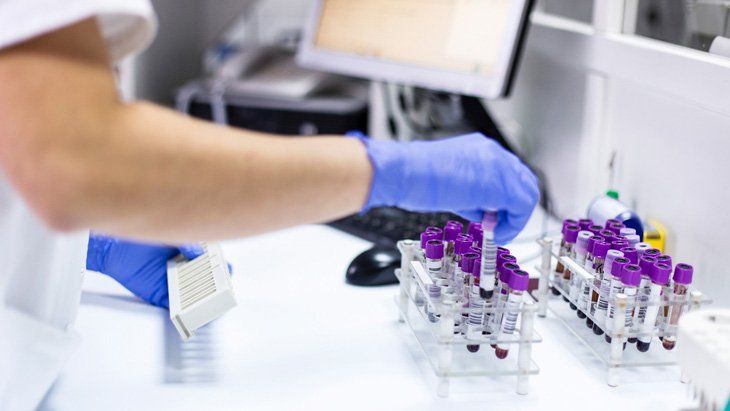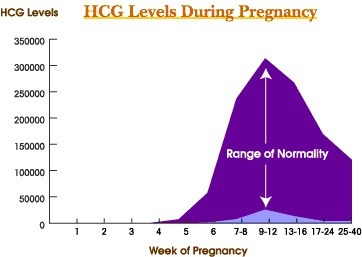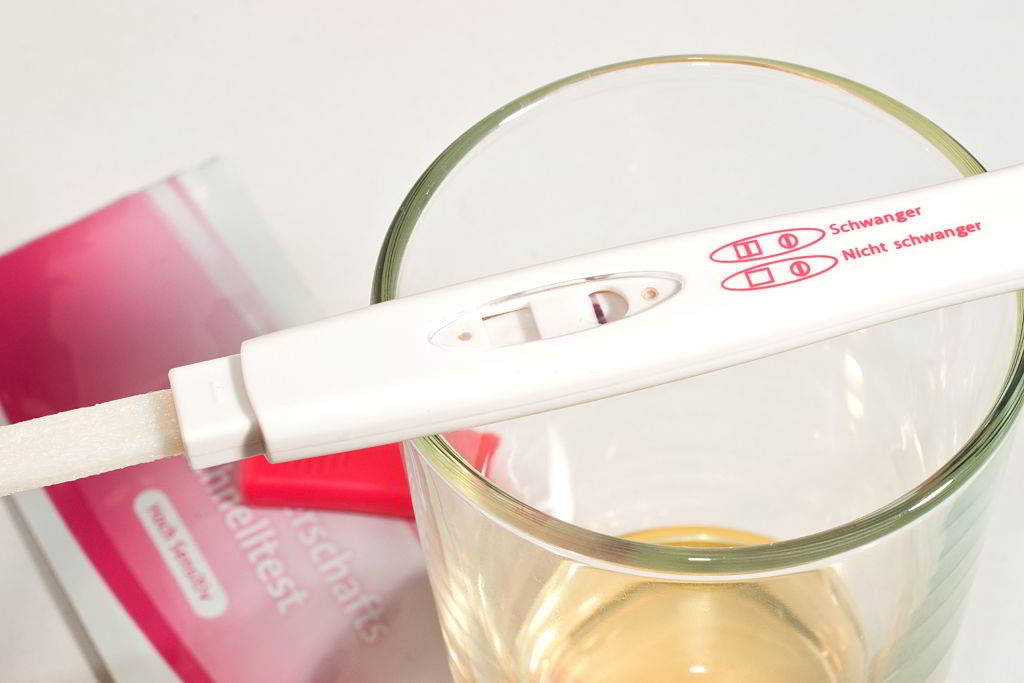Human Corionic Gonadotrophin or hCG is a hormone produced by the developing placenta right after conception or the fertilization of the egg by the sperm. The levels of this hormone can be detected in blood tests to measure and check how your pregnancy is progressing. The question is how to detect hCG levels at 5 weeks? In this article, I will show you how and I will also provide the list of hCG levels not just in 5 weeks but also in your 3rd, 4th, 5th week and so on.
Things You Need to Know About hCG
Human Corionic Gonadotrophin or hCG is your pregnancy hormone being produced by the placenta. It can be detected as early as 2-4 days through your urine. It doubles after every 48-72 hours and there is no such thing we call as ‘normal level in an early stage of pregnancy.
Remember that:
- hCG level below 5 mIU/ml is negative for pregnancy, while above 25 mIU/ml is positive for pregnancy.
- An HCG level between 5-25 mIU/ml should have a follow-up test for the confirmation of results.
- At an early pregnancy, the hCG level is below 1,200 mIU/ml, it double-up every 48-72 hours and will normally increase at 60% every two days.
- When the hCG level reaches 7,200 mIU/ml, there should be a visible yolk sac.
- When the hCG level hits more than 12,000 mIU/ml, a visible embryo with a heartbeat should be seen. Though it will take 22,000 mIU/ml hCG level to see the fetal heartbeat.
- At the 9th to 10th week of pregnancy, the hCG level normally decreases.
Human Corionic Gonadotrophin Quantitative Blood Test
This test measures the hCG hormone level present in your blood sample. Some of the names the doctors to refer to this test are a quantitative serial test, repeat a quantitative test, blood test, and quantitative blood test (pregnancy).
hCG is detectable in blood samples about (11) eleven days after your conception. The hormone level continues to double every (48) forty-eight hours or more.
Tests like hCG Human Corionic Gonadotrophin quantitative test are done to screen for Down’s syndrome, confirm pregnancy, diagnose a potential miscarriage, diagnose an abnormal pregnancy and determine the approximate fetus’ age.
Steps in Performing hCG Human Corionic Gonadotrophin Quantitative Test

The healthcare professional does the following steps to get blood samples from you:
- The healthcare professional will wrap a band that is elastic around your upper arm.
- This is done to stop the flow of the blood and to make the veins more visible.
- Visible veins will make the insertion of the needle quick and easy.
- Once the vein is visible, the skin that surrounds it will be cleansed with alcohol.
- The needle will be inserted into the located vein. There should be a tube to the needle’s end so the collection of a blood sample is possible.
- After the collection of the blood, the band will be removed.
- Once the needle is being removed, gauze or cotton is applied to the puncture area.
- Pressure is then applied to gauze or cotton. Secure with a band-aid.
Testing Procedure
Most of the tests are employing a monocional antibody, which is precise to the β-subunit of hCG. This process is to make sure that the test will not yield false positives by confusing the Human Corionic Gonadotrophin or hCG with FSH and LH.
1. Urine Tests
These tests are on chromatographic immunoassay format or another test format. Detection range from (20 to 100) twenty to one-hundred mIU/ml. At the early stage of pregnancy, more accuracy can be attained by using the morning’s first urine because the hCG level is at its highest.
2. Serum Tests
A (2-4) two to four mL of venous blood which is typically fluorimetric immunoassay or chemiluminescent is likely to detect low levels of 5mIU/ml.
HCG Level at 5 Weeks
Take a look at the HCG levels chart below.
| Weeks from LMP (Last Missed Period) | Amount of hCG in mIU/ml or IU/l |
| 3 weeks | 0 to 5 |
| 4 weeks | 5 to 426 |
| 5 weeks | 18 to 7,340 |
| 6 weeks | 1,080 to 56,500 |
| 7 to 8 weeks | 7,650 to 229,000 |
| 9 to 12 weeks | 25,700 to 288,000 |
| 13 to 16 weeks | 3,300 to 253,000 |
| 17 to 24 weeks (second trimester) | 4,060 to 165,400 |
| 25 weeks to term (third trimester) | 3,640 to 117,000 |
| After several days postpartum | nonpregnant levels (<5) |
Remember that an hCG level of less than 5mIU/ml is negative for pregnancy and 25mIU/ml or above is considered positive for pregnancy. If we base it on the guideline chart above, the hCG level at 5 weeks says 7,340 mIU/ml. Then, after 5 weeks the level is rising up.
The chart I showed you is only a guideline and not definitive. It will just give you an indication of what is possibly the range or level at a certain week of pregnancy.
If you have yourself checked and you have a low level of hCG, it can mean multiple things. It can indicate the following: pregnancy date miscalculation, possible blighted ovum or miscarriage, and ectopic pregnancy.
A high level of hCG can indicate the following: pregnancy dating miscalculation, molar pregnancy, and multiple pregnancies.
Make sure to have yourself rechecked within 48-72 hours to determine some changes in your hCG level. You can also check the chart below that is carried out by Dr. Sherbahn.
Is It Always Accurate (Blood Test)?
If the test is negative, it commonly means that the pregnancy is negative. However, if you took the test too early and your body hasn’t produced enough hCG, the result is a false negative. The result is you are not pregnant but you really are. The test should be repeated within or after 48-72 hours because hCG levels change.
On the other note, you can also get a false positive on your test. It means that the test says you are pregnant, but in fact, you are not. How is this possible? Your body makes antibodies of certain types that have a fragment of an hCG molecule. Get yourself rechecked, or try another method.
Why do HCG Levels Change?

This is probably the question that is asked by most of us. If we can observe the charts, the changes of hCG levels are so rapid and the doubling of the numbers can happen within 2 or 3 days. Most experts will say that it is because the placenta produces estrogen and progesterone hormones.
At this point, your hCG is not needed to stimulate the ovary to produce hormones. At the beginning of pregnancy, the hCG is especially crucial, it will help you determine if you have a healthy pregnancy or not. However, you shouldn’t enslave yourselves too much on the numbers. It is always recommended to visit your doctor.
Conclusion
I hope that you learned everything you need to know about hCG levels, especially hCG levels at 5 weeks. Again, I wrote this tutorial to inform you about the possible implications your hCG levels might tell. Pregnancy is really crucial because you have to know a lot of things about the changes your body is experiencing, and a couple of other things.
Your hCG level differs from other pregnant women, because like I told you every pregnancy is unique. However, it is important that you have a guide to at least know what your body is going through.
Remember that hCG levels change and one test cannot determine a definite or absolute state of your pregnancy. If you want to monitor it, you are free to do so as long as you also take care of other aspects of your pregnancy. I hope that you learned a lot in this article. I expect that your questions are already answered.
If you have questions, comments, suggestions, and stories to share, please let me and everyone know so I can respond to them quickly. Have a happy pregnancy!




I want to conceive with baby boy…any tips for baby boy naturally
You can refer more here
https://www.huggies.com.au/conception/getting-pregnant/pregnancy-how-to/conceive-a-boy
<1.20 mean pregnant or non pregnant?
It depends on the time you check. You can based on my hcg levels chart that finding answers
Pingback: When Does Nausea Start When You Are Pregnant? - ShrewdMommy
Very nice write-up. I definitely appreciate this website. Keep it up!